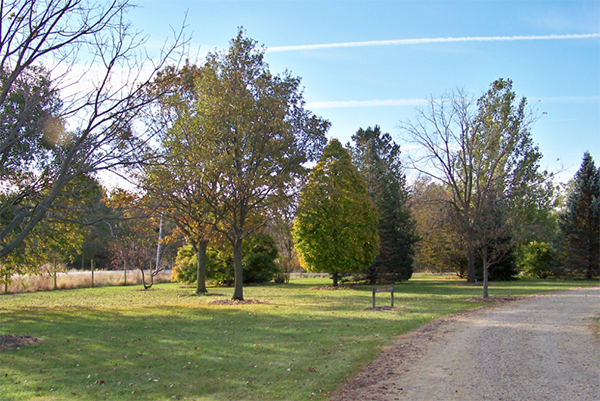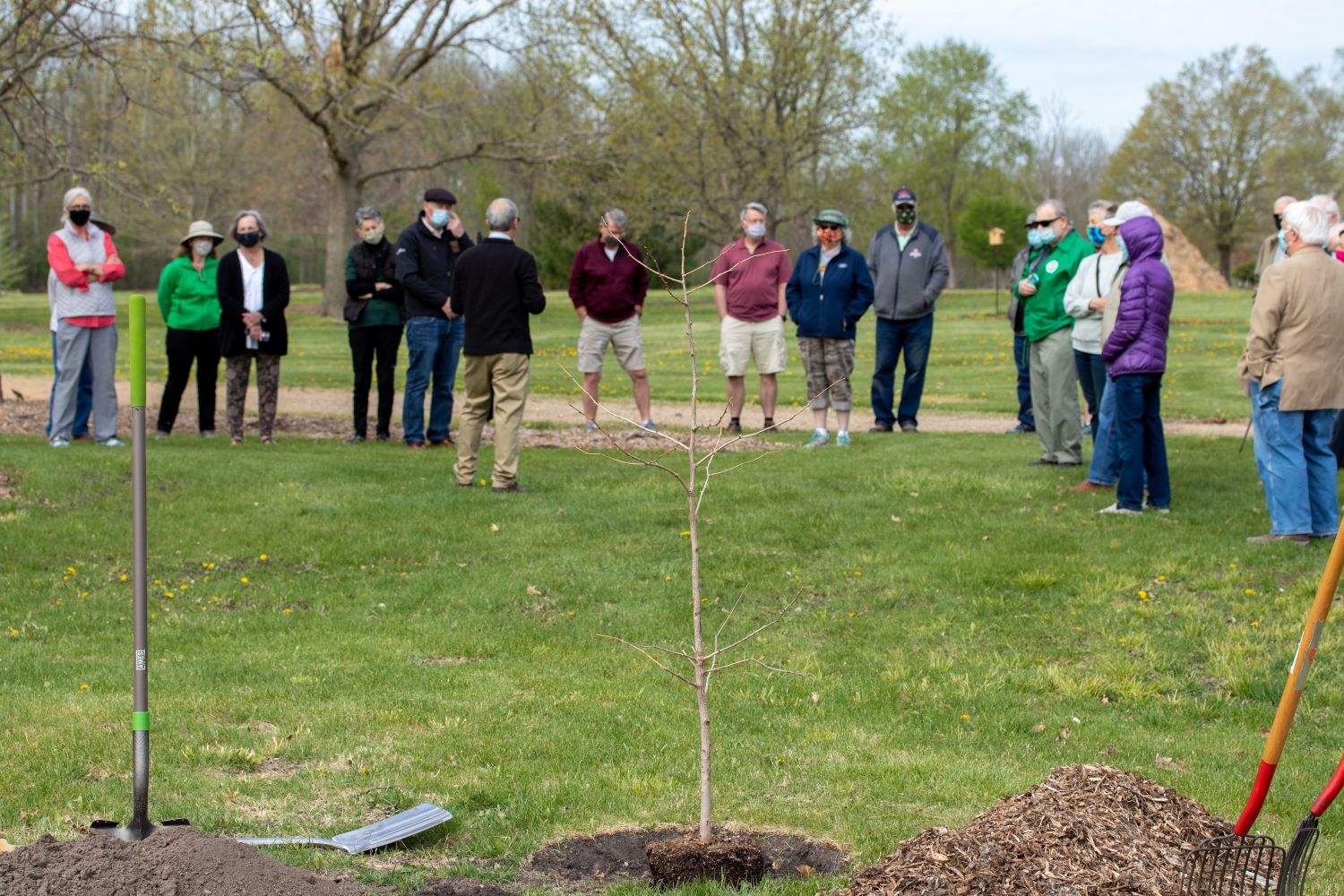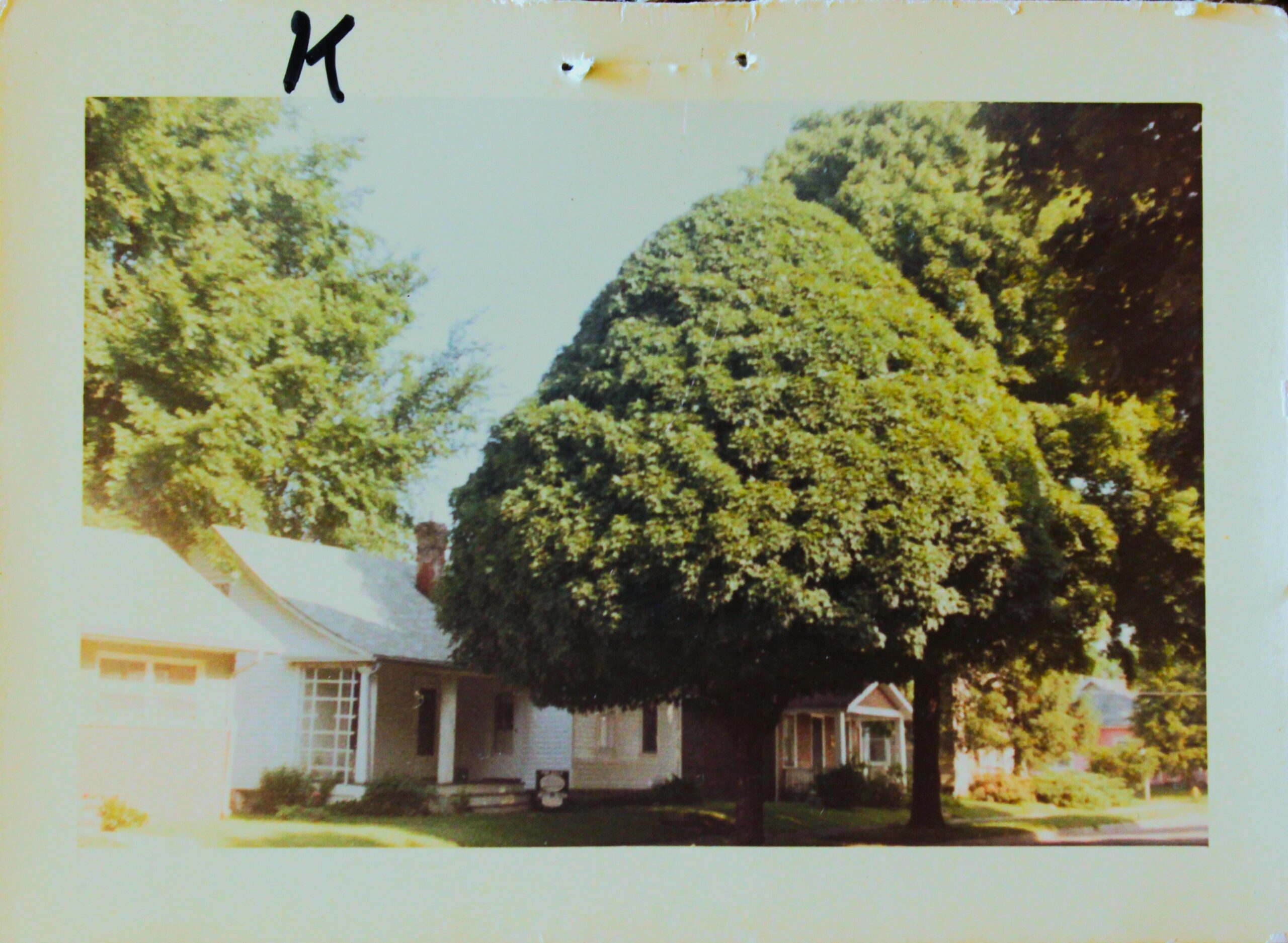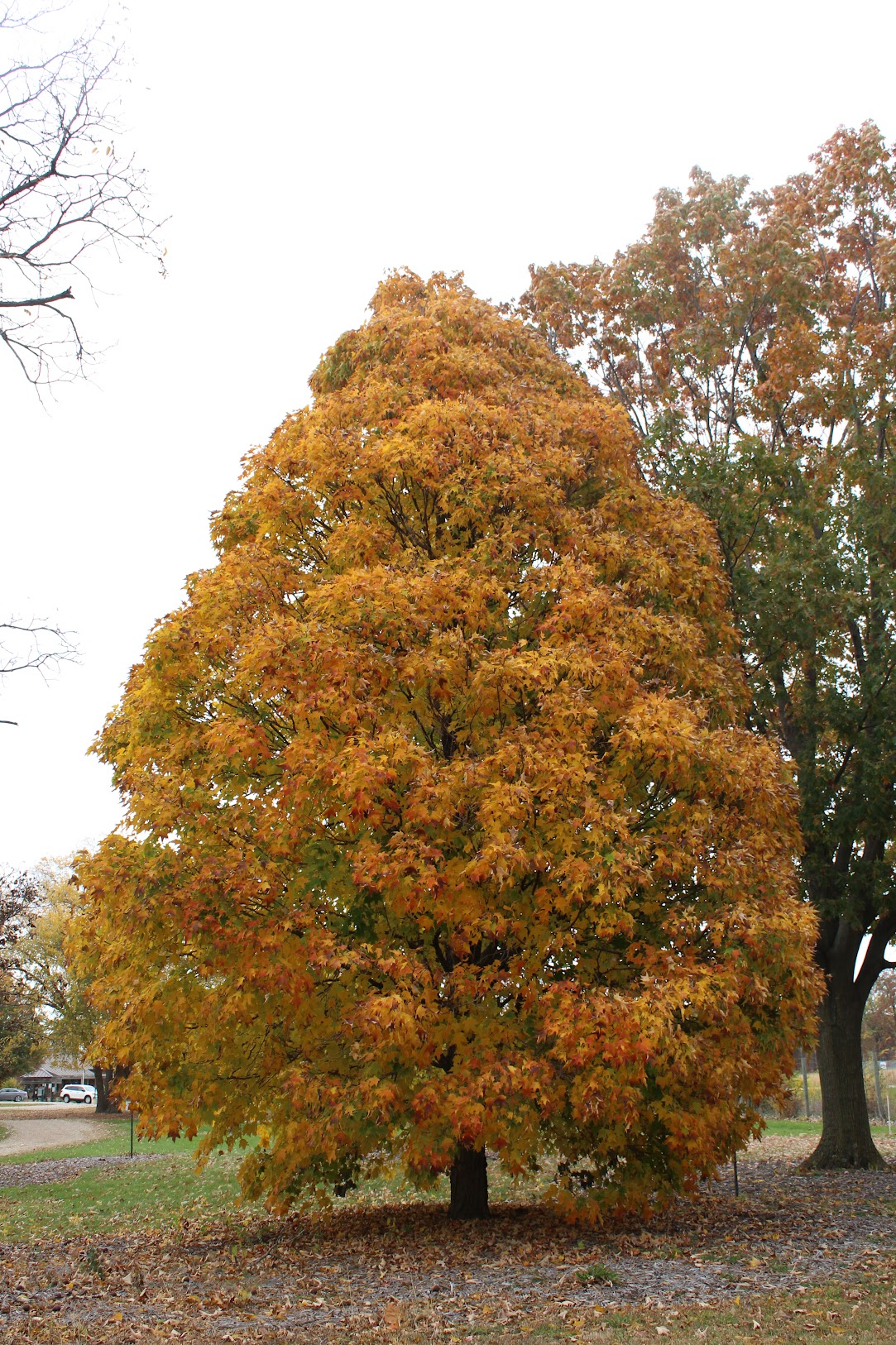FOUNDER’S GROVE
The Founders’ Grove is located in the southeast corner of the Arboretum and is home to the first trees planted on the Arboretum grounds. Beginning in 1970, board members celebrated the purchase of the 40-acre site by participating in a ceremonial tree planting. Honorariums to the founders of the arboretum are still being added today.
The two remaining oldest woody specimens planted at the arboretum are a three-flowered maple (Acer triflorum) and a yellowhorn (Xanthoceras sorbifolium), both originally planted in 1970. Both of these specimens are purportedly the oldest and largest specimens in Iowa. Additional notable plants include several maples, conifers, oaks, walnuts, and a sycamore. Continual planting of trees happened well into the 1980’s, building a time capsule of unique trees that were relatively under used at the time. Now fully mature, these trees are tall and stately. Unfortunately, much of this grove was affected by the 2020 derecho, leaving only the strongest and healthiest dozen or so specimens. To this day, trees are being added as part of Arbor Day celebrations and in honor of significant arboretum milestones.

Two notable recent additions are a golden larch (Pseduolarix amabilis) planted in honor of the Iowa Arboretum’s 50th Anniversary and a survivor ginkgo (Ginkgo biloba). This ginkgo tree is one of several planted in central Iowa with a special story. Known as Hibakujumoku trees, these ginkgo trees are descendants of trees that witnessed and survived the atomic bombing of Hiroshima and Nagasaki in Japan. Distributed by the organization Mayors for Peace to the city of Des Moines for becoming an international member, they are a symbol of peace to raise public peace consciousness. This tree was provided to us by Greater Des Moines Botanical Garden, where another tree is planted in the Robert D. Ray Asian Garden. The Brenton Arboretum also has a sister tree, while a fourth is planted at the Bell of Japanese Peace and Friendship in Des Moines. This particular individual was planted in 2021, the first tree to be planted here after the devastation experienced from the the 2020 derecho.


The Kompact Sugar Maple
In the 1970s, the late Al Ferguson discovered a remarkable tree in a yard on ‘K’ street in southeast Cedar Rapids. He took note of its dense canopy and stately pyramid shape. He tried grafting it but only a select few trees survived into their toddler years. He shipped these specimens to the Minnesota Landscape Arboretum, the Secrest Arboretum, and to the Iowa Arboretum.


The Compact Sugar Maple planted at the Iowa Arboretum is a sight to behold. Planted in 1981, it is tucked into the Founder’s Grove on the southeast section of the cultivated arboretum ground. After decades of growth, it has a tightly upright form and an uncharacteristically dense canopy. It has reached a staggering 45 feet tall but remains only 25 feet wide. The leaves emerge dark green in spring then stay that way all through summer. In the fall, the tree ignites in shades of gold, orange, and crimson. The plant also has never produced seed, which could be an added attraction to homeowners who dislike seedy maples.
Attempts were made in the early 2000’s to formally introduce the tree into the horticulture trade with little success. Additional propagation attempts have been made more recently to ensure the preservation of this tree. While cuttings work, the maple takes a long time to establish and even longer to start to regrow. Grafting may also be successful. Even with these challenges, the Iowa Arboretum will continue to try to replicate this much beloved Iowa selection from Al Ferguson.
Back to Our Plants hompage
Plant List:
Abies balsamea – Balsam fir
Acer saccharum ‘Kompact’ – Kompact sugar maple
Acer triflorum – Three-flowered maple
Acer x freemanii ‘Autumn Blaze’ – Autumn blaze maple
Carya ovata x – Shagbark hickory hybrid
Ginkgo biloba – Survivor ginkgo
Juglans nigra – Black walnut
Malus x ‘Professor Sprenger’ – Professor Sprenger crabapple
Malus x ‘Royal Ruby’ – Royal ruby crabapple
Malus x ‘Sparkles’ – Sparkles crabapple
Picea engelmannii ‘Fritsche’ – Fritsche Engelman spruce
Pinus densiflora ‘Umbraculifera’ – Tanyosho pine
Pinus parviflora – Japanese white pine
Platanus occidentalis – American sycamore
Pseudolarix amabilis – Golden larch
Quercus alba – White oak
Quercus coccinea – Scarlet oak
Taxodium distichum – Bald cypress
Viburnum sieboldii – Siebold’s viburnum
Xanthoceras sorbifolium – Yellowhorn
Xanthoceras sorbifolium ‘Rubra’ – Red flowered yellowhorn
